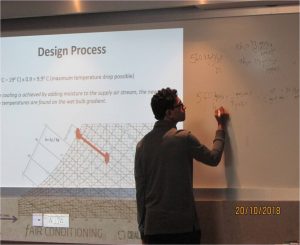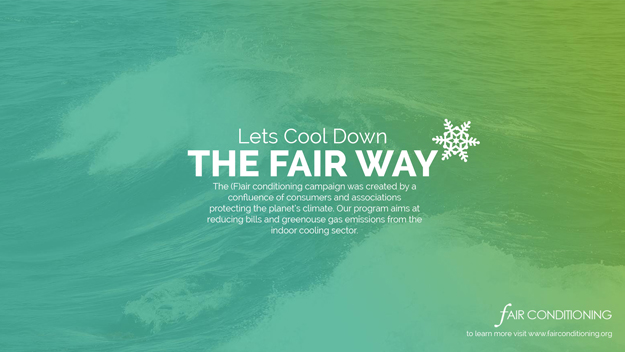‘Look beyond the electrical switch, there’s a person mining coal that will power the space you design’- A heart that empathizes with miners and a mind that considers them while designing can ensure we work to minimize the injustices our built spaces currently create. Isn’t this what our architecture and engineering education should do? Nurture responsible architects and engineers to think critically, to care and to serve not just themselves or a tiny segment, but the society, and the world?
The current education system in India mostly reflects otherwise. Information is thrust onto students instead of encouraging them to think critically and creatively. Their hearts and eyes are closed to social and ecological injustices and so the buildings and spaces built often do more harm than good. It is no longer good enough to claim ignorance. There is enough evidence that things need to change, and now. And where else to begin than at the beginning? With architecture and engineering education. Even if we don’t have all the answers, we will more likely create possible ones if we grapple with the questions rather than ignoring them, pretending they don’t exist or wishing them away.
At this juncture in history the time is right for a widespread engagement with creating a just world. The Fair Conditioning ACIP program is one such hopeful pathway for architecture and engineering educators to ensure that they do justice to their position; both as creators of just homes and spaces and as nurturers and leaders of our future professionals.
The Injustices of Air Conditioning
The Fair Conditioning ACIP program emerged from a recognition of the injustices of air conditioning. Simply put, India’s building sector is expected to augment by 4 to 5 times its current size by 2030 and given prevalent building practices, rising temperatures and increasing purchasing capacity of people inhabiting urban areas, the magnitude of window and split ACs in operation in India will grow to 225 million in 2035. Not only will ACs consume huge amounts of electricity but they will also emit what are called ‘super greenhouse gases’ – 2000 times more powerful than carbon dioxide. In addition, since a typical split-unit AC in India consumes the energy required to run 24 ceiling fans, essentially AC users deprive about 25-fold the number of persons of power to operate fans during India’s harsh summers. Beyond air-conditioning the injustices caused through increasing built space know no bounds. Inequitable energy access, inequitable water and other natural resource use, carbon pollution, health impacts, read a little more and the scope of these injustices and their consequences come crashing down on us. But we’ve known of these injustices in building design and construction for years. India has already committed to bring about a 33-35% reduction in its greenhouse gas emissions by the year 2030 at the United Nation’s Conference of Parties in Paris (COP21, 2015) and signed the Kigali Amendment to the Montreal Protocol in 2016 where we have agreed to phase out conventional refrigerants (HFCs). And there are people and institutions that have been incorporating sustainable cooling practices and technologies that are equally well known. Why then are they not being incorporated in all buildings?
The Educational Lacuna
Our research on academic curricula in India’s top 55 architecture colleges indicated that less than 25% offer courses that embed energy efficiency or sustainable design knowledge to some degree into the student’s critical thinking and design skill set. Amongst these, only 3 or 4 out of 72 courses over the course of a bachelor’s degree require a student to think and work on the environmental impact of their designs. Therefore, only 5% of India’s architecture colleges curricula is related to the environmental impact of buildings. We estimate that every year, India’s 423 architecture colleges graduate 17,000 students with deficient skills. Until now, most of the people designing buildings have graduated from this system. This means that in spite of having an Energy Conservation Building Code (ECBC), if it were to be enforced by law across all Indian states today, the workforce in place would be unable to implement it. The necessity of the hour, then, is making sustainability an inextricable aspect of architecture curricula. Just as fire safety is a non-negotiable, sustainable principles and technology should be incorporated into building design by default.
Sustainability Begins at the Beginning: The Academic Curricula Integration Program (ACIP) :
With the aim of incorporating aspects of sustainable design in architecture curricula, in September 2017 the Indian Bureau of Energy Efficiency (BEE) and Council-of-Architecture (CoA) signed an MOU to integrate aspects of building physics and energy efficiency in some technical courses. In September 2018 a guidebook was published by the Ministry of Environment and Forests (MoEF): “A Guide For Integration Of Topics Related To HCFC Phase Out And Energy Efficiency In Architectural Curriculum”. Such efforts are meaningful, yet miniscule to meet the need for sustainable buildings in the coming years. Our Academic Curricula Integration Program (ACIP) has evolved over the past 8 years to contain multiple elements that facilitate the development of the culture and discourse of sustainability as well as its technologies, techniques and practices into architecture and engineering curricula.
The ACIP begins with a multi day capacity building workshop for teachers of a participating college. It includes a refresher of essential technical skills related to topics like heat transfer, psychrometry, adaptive thermal comfort, passive cooling design strategies, climate analysis, and solar geometry and is followed by training modules related to science and engineering principles of sustainable cooling technologies such as structure cooling, solar vapor absorption systems, and natural refrigerants. The workshop adopts a learning-centric approach where professors experience ‘how their students can learn’ as opposed to ‘how they can teach students’. Sensitization techniques, technical concepts, teaching tools and pedagogy techniques are explored through the workshops. Further, our team supports professors towards integrating sustainable concepts seamlessly in their lesson plans during the workshop.

Exploring Psychometry Concepts

Exploring Solar Geometry Concepts
While professors express enthusiasm and motivation to facilitate enriching learning experiences for their students, they also encounter challenges such as difficulty in mobilizing students to engage with new concepts and learning techniques, lack of effort or resistance from colleagues or management and difficulties in completing the lesson plan as scheduled among other barriers. With the support of behavioural change concepts such as biases, professors are encouraged to reflect and share their own approaches to these challenges. Through this process professors often report renewed enthusiasm, courage and insight to overcome them, both learning from the examples of previously participating colleges and contributing to the ongoing development of the collective field.
Beyond the initial workshop, colleges choose a pilot semester in which to integrate sustainability into the curriculum and these additional elements of ACIP enhance what began in the workshop. Engagement with the teacher cohort includes curricula integration handholding, monitoring, and troubleshooting during the pilot semester. Within this timeframe horizontal interlinkages between sub streams of humanities, theory, technical and design, as well as vertical integration across semesters/years are established. Our continued engagement with academia has in fact led to the inclusion of this crucial support element along with the development of pedagogy manuals, teaching aids and other knowledge materials. Professors use the Fair Conditioning ‘Sustainable Pedagogy Manual’ and a ‘DIY Physical Teaching Aid Construction Manual’ as additional resources. A ‘starter kit’ of physical teaching aids is also made optionally available at a subsidized rate to the participating colleges. (Please visit fairconditioning.org for selected resources. All resources developed under Fair Conditioning are part of the knowledge commons.)

Solar Geometry Teaching Aid Kit
All the activities, tools (including softwares) and materials offered to professors have been designed keeping in mind the continuously evolving nature of knowledge around sustainability and also to encourage curriculum development that is inclusive and rooted in dialogue and co-creation. Mid and end semester roundtables not only allow for course correction and knowledge sharing among teachers, students and management but also provide the opportunities to amplify the program objectives of making sustainability the shared responsibility and lived practice of all. The board of studies (BOS) roundtable takes an important first step towards this by including neighbouring colleges and local board of studies members, architects and other stakeholders (practitioners in the field and other educational institutions).
Conclusion
In the words of one architecture student, “Architecture is not just an occupation, it is a responsibility”. While we believe this, we also see that it is not a responsibility to be left to the discretion of well-intentioned or extraordinarily talented, committed teachers and practitioners. Often they leave, move, transfer or are transferred. It serves none of us if only a few teachers or architects or engineers or decision makers have the head, heart and hands to make necessary changes, to lead. On the other hand it serves all of us to care about the world beyond ourselves, to engage again and again with the difficult issues no matter our capacity and to share in the responsibility of sustainability and justice. As stewards of the educational climate which is inextricably linked to the fate of our planet, we encourage and support educators to collaborate with each other and join forces to mould not just our students but the future. As Gandhi said, “True education must correspond to the surrounding circumstances or it is not healthy growth”.

